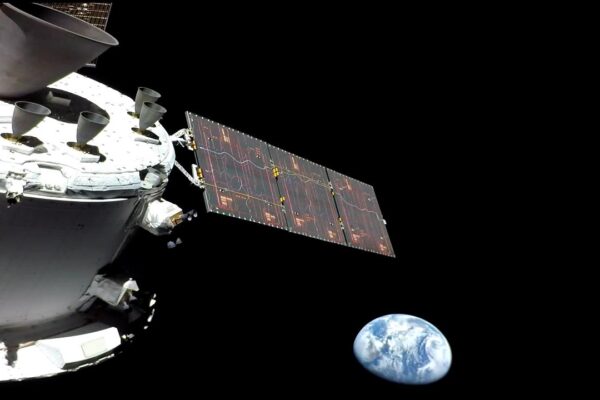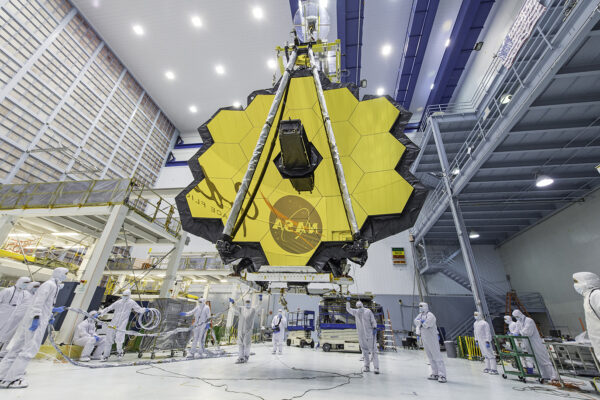“As we leave the Moon at Taurus-Littrow, we leave as we came and, God willing, as we shall return, with peace and hope for all mankind.”
These were the words of Apollo 17 astronaut Eugene Cernan just over 50 years ago as he and fellow astronaut Harrison Schmitt departed from the lunar surface for the last time as part of the Apollo program.
In the years following Apollo, NASA shifted the human spaceflight program to the Shuttle and the International Space Station (ISS). Much has been learned from these activities, but now it is time to move beyond low-Earth orbit into deep space, beyond the protection of Earth’s magnetic field, and to do so in a sustainable way.
Returning to the Moon is the logical place for this next great endeavor; it is only a short trip from Earth, and the Moon offers a stable platform for humankind to learn to live and work off Earth and beyond low-Earth orbit. While the allure of Mars fascinates many, the truth is that we have much to learn about deep space travel before we can entertain that trip with humans. In the meantime, the Artemis rocket and the Orion capsule once again give the U.S. and NASA the capability to launch humans into deep space and return them safely to Earth.
Although Artemis-1 was over budget and years behind schedule, we could not help but applaud as we watched it lift off from Cape Canaveral Nov. 16, 2022, and begin a journey — one that would take it around and well beyond the Moon and return to Earth, testing the new Orion capsule’s re-entry through Earth’s atmosphere and splashdown. Although it carried no crew, Artemis-1 delivered scientific experiments to space, and the Orion capsule carried three instrumented mannequins designed to test the effects of radiation on the human body.
Radiation is a major concern for extended operations in deep space, where a solar flare could spell disaster for astronauts. On the Moon, protection will be required. And, fortunately, there are ways to do it using materials on the Moon itself or by using the Moon’s natural caves — lava tubes.
Critical to the success of Artemis, which aims to put humans on the Moon by 2025 or 2026, is to create an outpost that is sustainable, much like the research station at McMurdo in Antarctica. As a planetary body, the Moon has rich geology and history. In fact, it holds a better record of events in the early solar system than does Earth, especially of the great impact bombardment that affected all the planets of the inner solar system. Some of that record is known from Apollo-era studies and from orbital missions of the past two decades, but much remains to be learned. The Moon’s poles contain buried ices in permanently shaded craters, and studies of these ices may reveal unique information about the origin of Earth’s water and other volatile elements. The ices may also provide a ready source of hydrogen and oxygen for life support and for use as rocket fuel for travel beyond the Earth-Moon system.
The success and sustainability of the program will be driven by three issues: 1) national interests, including defense; 2) commercial interests; and 3) international cooperation. The Moon is “high ground” in cislunar space, with an unparalleled and synoptic view of Earth, one that was featured during the Artemis-1 mission. Carrying out activities successfully is a form of soft power currently being exercised by the U.S. and by China, which also has a very active lunar exploration program.
Commercial interests are coming to fruition as companies compete for transportation and lander services, initially in concert with NASA. It is only a matter of time, however, before entities such as SpaceX and Blue Origin develop the capabilities and implement missions of their own, including for space tourism and adventure, and the harvesting and utilization of lunar resources.
Finally, the sustainability of deep-space operations on the Moon will require international cooperation. The ISS has been a great proving ground in this regard. Such space activities are expensive, and the costs are more palatable if shared by global partners. Space activities also uplift the national spirit and inspire young and old alike.
— Bradley L. Jolliff
This brings us full circle to astronaut Cernan’s words upon departing the Moon Dec. 14, 1972: “…we shall return, with peace and hope for all mankind.” Although returning to the Moon, this time to stay, may have many diverse motivations, we must ensure that our actions are peaceful and serve to unify and inspire, and lead to ways that we can improve life here on Earth.


